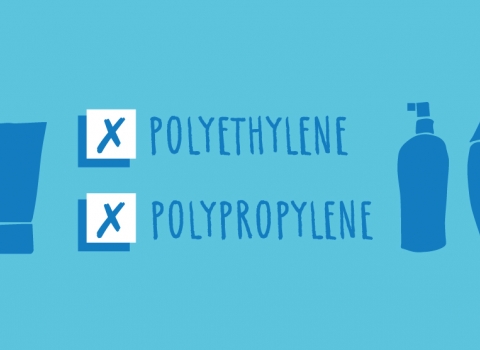Plastic microbeads have been banned in the UK for rinse-off cosmetics... but that's not the end of the matter.
What are microbeads?
For the last 50 years, tiny particles of plastic less than 1mm wide – microplastics - have been used in personal care products and cosmetics such as facial scrubs, shower gels, eyeshadow and toothpaste. It’s estimated that there can be as many as 360,000 tiny plastic beads in a standard bottle of some facial cleansers and that 35,000 tonnes of microplastics from cosmetics alone end up in the ocean every year.
Why are they a problem?
Microbeads can’t be recycled and are so tiny, they slip through water treatment plants into our seas and rivers. They don’t just disappear although they may break down into even smaller pieces, and they can have detrimental effects at all levels of the food chain - from microscopic plankton to fish and seabirds, with the potential to accumulate in animals' bodies further up the food chain. With plastics being found in seafood, this means that humans are at risk of ingesting plastic too.
Microbeads in rinse-off cosmetics have been banned in the UK, but can still be found in many other products, including sunscreen, lipstick and paint
Weren't microplastics banned in the UK?
Following a ban on manufacture earlier in the year, June 2018, saw a ban on the sale of rinse-off products containing plastic microbeads in the UK. This ban includes products like toothpaste and scrubs. Microbeads made of plastic are still permitted in many other products including cleaning products, sunscreen, paints and lipstick, so it's still important to be on the lookout. It is estimated that 210,000 tonnes of plastic from paint on roads and buildings end up in the ocean every year, meaning the ban is only effective on a very small portion of the problem!
What can I do?
Check product ingredients for microbeads, especially items that claim to polish, add extra shine or shimmer. Because they are made from various plastics, they come under many different names, making them hard to spot. Here are some of the most commonly used plastics to look out for:
- polyethylene (PE)
- polypropylene (PP)
- polyethylene terephthalate (PET)
- polymethyl methacrylate (PMMA)
- nylon (PA)
Even though the ban has taken effect in the UK for rinse-off cosmetics, you may still have some products lurking in your bathroom at home. If you do come across any, don't wash them down the sink! Using a coffee filter, you can try straining the product by pressing it through a coffee filter to capture the beads and dispose of them in your refuse bin, and use the remainder of the strained product plastic-free! This may be difficult with thicker products, so use your judgement and dilute if appropriate.

